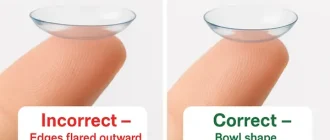Contact solution, like many other products, does indeed expire.
Expiration Date
- The expiry date, usually found on the packaging of the product, serves as a guarantee of the product’s optimal effectiveness and safety.
- Beyond this time frame, the manufacturer no longer guarantees the solution’s efficacy.
Compromised Quality
- After expiration, the solution’s disinfecting capability may decrease, risking eye infections due to proliferation of bacteria or yeasts in contact lenses.
Checking the Date
- Prior to buying or using contact solution, it is crucial to confirm the expiration date to ensure the user’s safety.
Determining whether using a contact solution past its expiration date is good or bad is crucial. It’s essential to keep in mind that the expiration date signifies the manufacturer’s guarantee of the product’s optimal safety and efficacy until that time.
- Potential Hazards: Using contact solution after its expiration date may hold potential hazards. The solution may not disinfect efficiently, leaving the contact lenses impure and increasing the risk of eye infections.
- Decreased Effectiveness: Besides the potential safety risks, the solution’s effectiveness may decrease over time, resulting in discomfort while wearing the lenses.
- Ingredient Stability: The stability of the ingredients may also get compromised after the expiration date. This instability could lead to eye irritation, blurry vision, and other serious eye conditions.
Therefore, using expired contact solution may not be advisable due to risks to eye health. It is always recommended that individuals should purchase new contact solution before the expiration of the current bottle to ensure optimal eye safety and lens maintenance.





